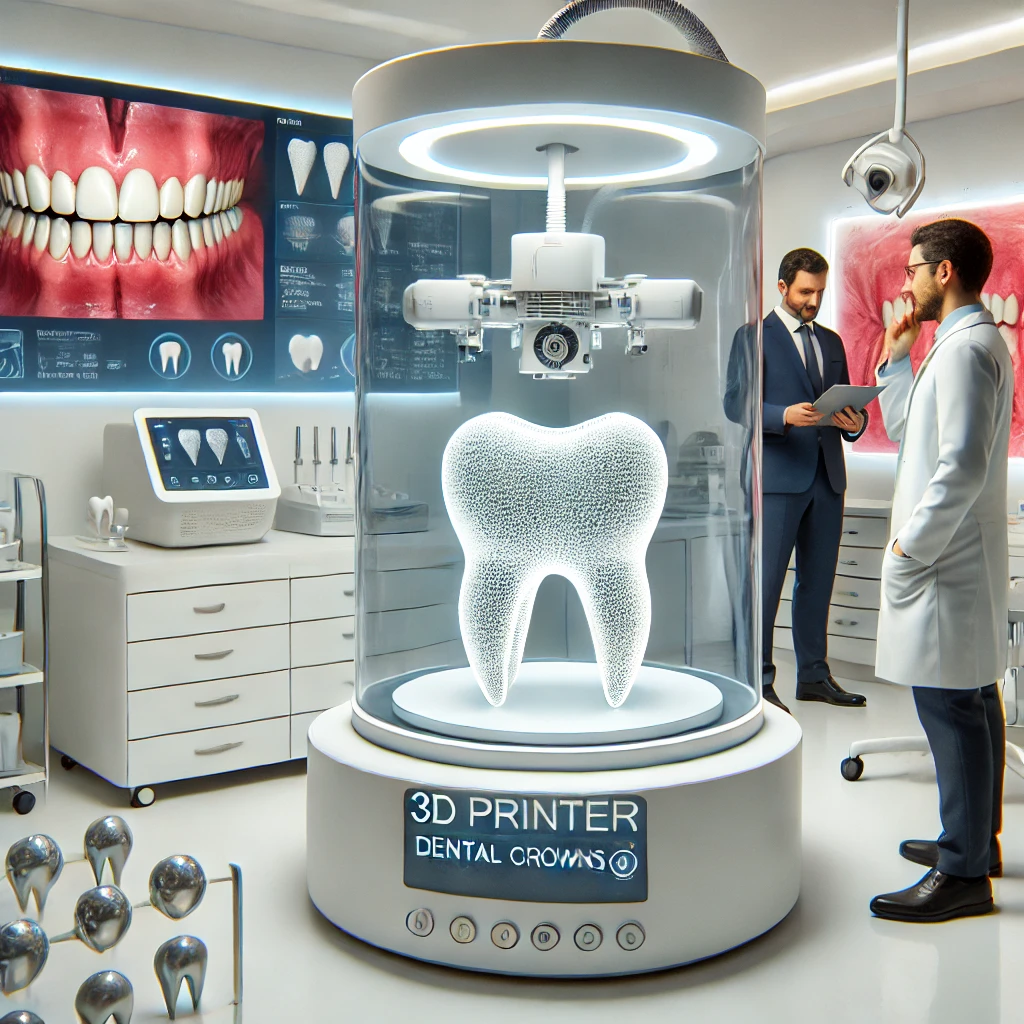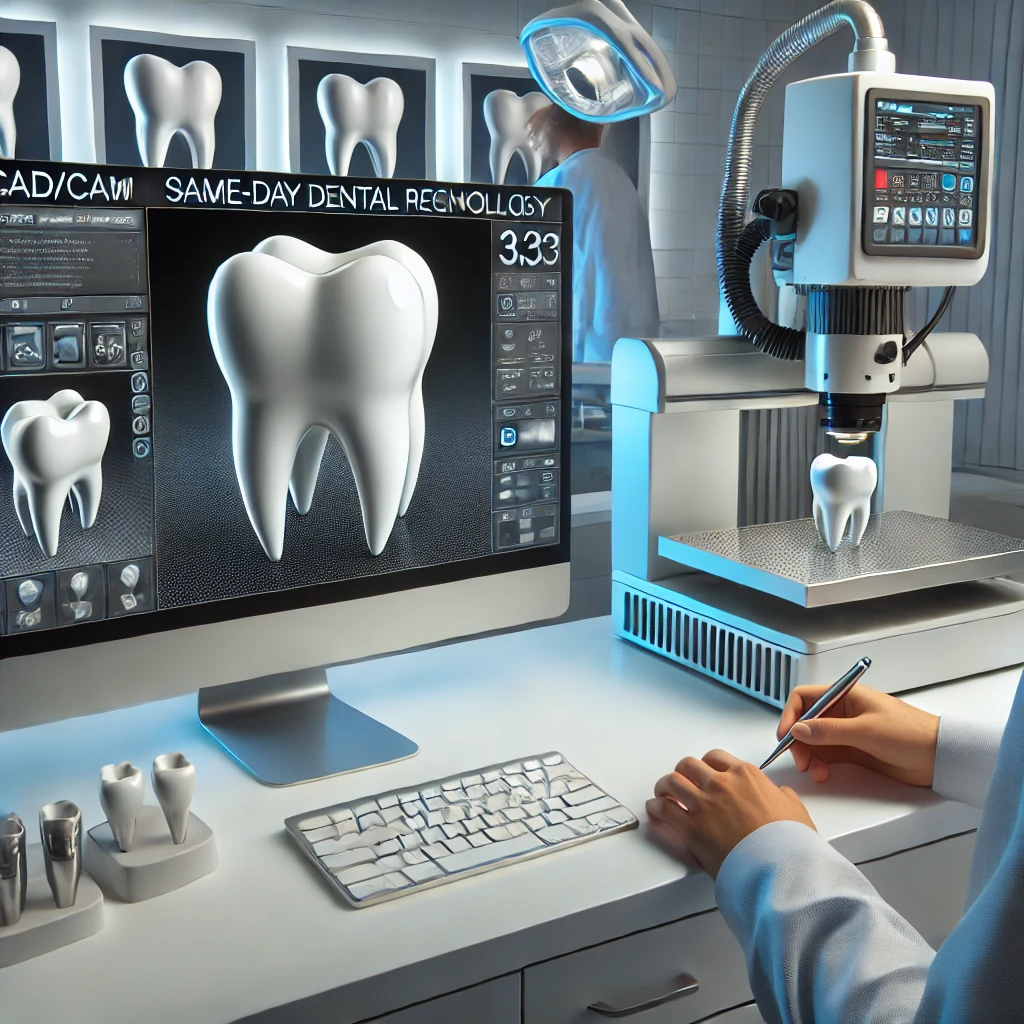The world of dentistry is rapidly evolving, thanks to the latest advancements in digital technology. Dentists who embrace these innovations can deliver more accurate, efficient, and patient-friendly care. In this article, we’ll explore the latest digital dentistry innovations every dentist should be aware of in 2024.
1. 3D Printing: Revolutionizing Dental Restorations:
3D printing is one of the most impactful innovations in modern dentistry. It allows for the creation of dental restorations like crowns, bridges, dentures, and even orthodontic devices with greater precision and speed. This technology has reduced the turnaround time for prosthetics, enabling same-day restorations and improving overall patient satisfaction.
Why It Matters for Dentists:
- Faster production of dental prosthetics
- Enhanced accuracy and customization
- Reduced reliance on third-party dental labs

2. Artificial Intelligence (AI) in Diagnostics and Treatment
AI in dentistry is transforming how dentists diagnose and treat patients. AI systems analyze vast amounts of data to detect patterns, predict disease progression, and recommend treatment plans. It’s particularly useful for interpreting X-rays and detecting conditions like cavities and gum disease earlier than human inspection alone.
AI Innovations in 2024:
- AI-based diagnostic tools for early cavity detection
- Predictive analysis for personalized treatment plans
- Enhanced clinical decision-making through machine learning
3. Intraoral Scanners: Accurate, Mess-Free Impressions
The days of uncomfortable dental impressions are gone, thanks to intraoral scanners. These digital tools create highly accurate 3D models of a patient’s teeth, improving the speed and accuracy of treatment planning. Intraoral scanners are now widely used in orthodontics, prosthodontics, and dental implants.
Benefits for Dental Practices:
- Improved patient comfort and experience
- Faster and more precise impressions
- Better treatment outcomes and reduced errors
4. CAD/CAM Technology: Precision Restorations in a Single Visit
CAD/CAM technology (Computer-Aided Design and Computer-Aided Manufacturing) is increasingly popular in dental clinics for creating restorations like crowns and veneers. With this technology, dentists can design and manufacture prosthetics chairside, reducing the need for multiple appointments.
Key Advantages:
- Same-day crowns and restorations
- Increased precision and durability
- Enhanced patient convenience

5. Teledentistry: Expanding Access to Remote Dental Care
The rise of teledentistry has made it easier for patients to access dental consultations without visiting a clinic. This trend gained momentum during the pandemic and continues to grow in 2024. Teledentistry is especially useful for follow-up appointments, initial consultations, and patients in remote areas.
Why Teledentistry is a Game-Changer:
- Expands access to care in underserved areas
- Saves time for both patients and dentists
- Ideal for follow-ups and consultations
6. Cone Beam Computed Tomography (CBCT): Advanced 3D Imaging
CBCT technology provides highly detailed 3D images of a patient’s oral anatomy, making it invaluable for implantology, endodontics, and orthodontics. Unlike traditional X-rays, CBCT offers a 360-degree view, helping dentists plan procedures more accurately and reduce complications.
Benefits for Dentists:
- Enhanced diagnostic accuracy
- Improved treatment planning for complex cases
- Reduced risk of complications in surgery
7. Digital Smile Design (DSD): Personalized Aesthetic Dentistry
Digital Smile Design (DSD) allows dentists to create personalized, patient-specific treatment plans. By using facial and dental analysis, dentists can design a smile that suits the patient’s features and preferences. DSD improves communication between dentists and patients, ensuring predictable aesthetic results.
Why DSD is Popular in 2024:
- Personalized cosmetic dentistry
- Enhanced patient satisfaction
- Predictable and visually guided outcomes
8. Robotics in Dental Surgery: Precision and Safety
Robotics in dentistry is no longer a futuristic concept. Robotic systems are now assisting dentists in implant placement and other surgical procedures, ensuring precision and minimizing human error. Robotics improve accuracy and can even reduce recovery times for patients.
Robotic Dentistry Innovations:
- Increased precision in complex surgeries
- Reduced risk of human error
- Faster patient recovery times
Why Embrace Digital Dentistry in 2024?
The integration of these digital technologies into dental practices not only improves treatment outcomes but also enhances the patient experience. By staying ahead of these innovations, dentists can offer state-of-the-art care, build patient trust, and differentiate their practices from competitors.
Conclusion
The latest trends in digital dentistry, from AI-powered diagnostics to 3D printing and teledentistry, are revolutionizing the dental industry. Incorporating these innovations into your practice will ensure more precise treatments, faster turnarounds, and improved patient satisfaction. As we move further into 2024, adopting digital technologies is no longer optional—it’s essential for any forward-thinking dental practice.

I don’t think the title of your article matches the content lol. Just kidding, mainly because I had some doubts after reading the article.